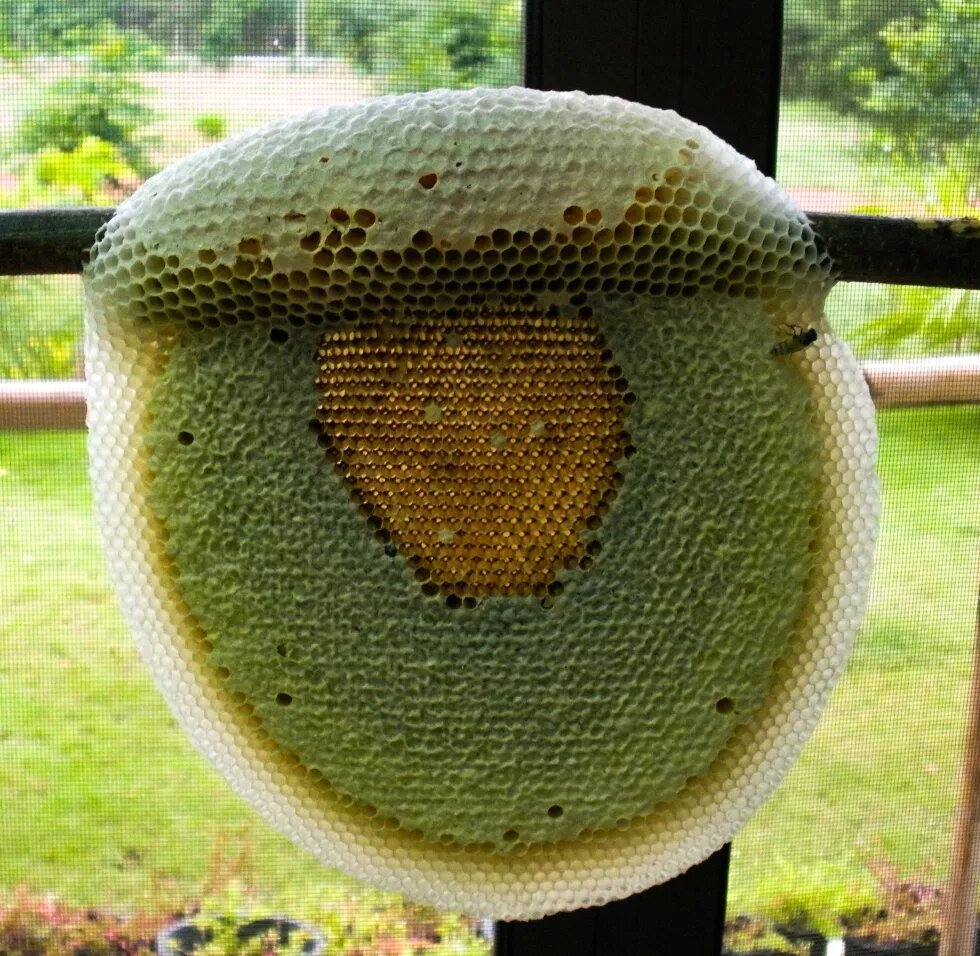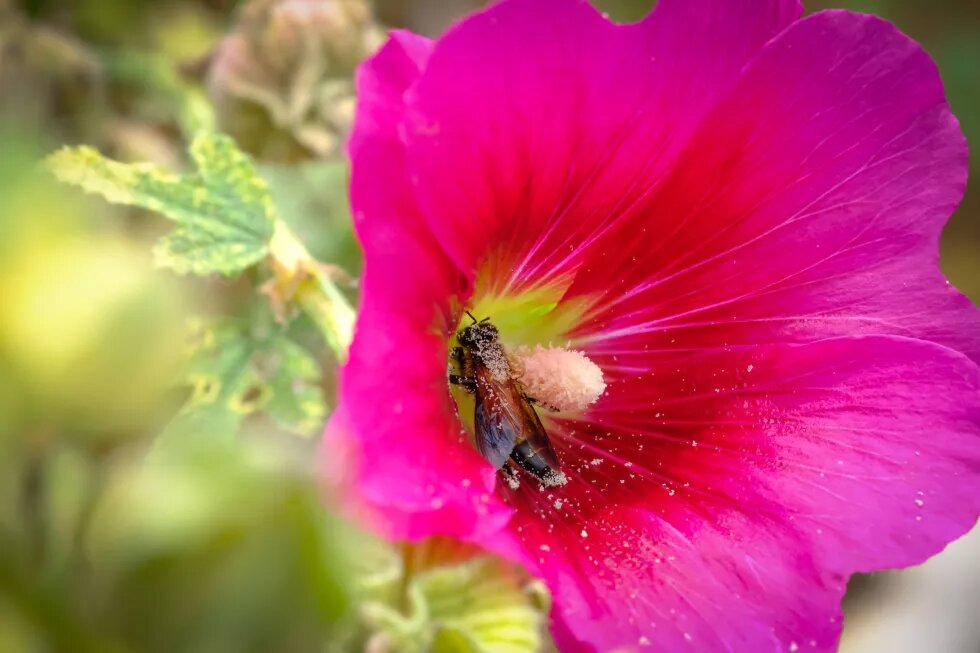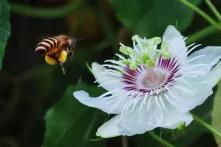
Small-scale beekeeping with native species is a resourceful way of tapping into local honey production alongside increasing household incomes in Southeast Asia. Though honey from a range of different honey bee species can be harvested, finding those species most suitable to the native landscape will result in more ecological and community resilience.

Native beekeeping and economic feasibility
In Asia, the European honey bees, Apis mellifera (A. mellifera), are manipulated under intense care by farming protocols at a large commercial scale. They are highly investable under nomadic beekeeping conditions. Since 2006, remarkable global climate changes have affected populations on Earth, which has posed many challenges to A. mellifera beekeeping. Therefore, recent efforts regarding the beekeeping of native species have been carried out as an alternative.
Native bee species are more capable of defending themselves against native pests, parasites, and diseases than the introduced species A. mellifera. Under situations of limited capital, wild stocks can be obtained from tree hollows and cavities in natural habitats. Moreover, recycled wood and re-used household equipment can be used as beekeeping material. With this, beekeeping using native species reduces costs by up to 40% compared to a modern beekeeping system with introduced bee species.
Beekeeping of the Eastern honey bee, Apis cerana (A. cerana), has recently become essential in Asia, particularly in poverty-stricken remote communities. Apis cerana is well-adapted to its environment and thrives within its native range. Recent efforts on A. cerana beekeeping have been promising and profitable. Apis cerana can be kept in a diverse range of environments, including mountainous, marshy, agricultural, urban, and peri-urban landscapes. Because of this characteristic, the interest in beekeeping of native A. cerana as a small-scale entrepreneurial venture has increased. Nevertheless, the untamed character of A. cerana, which is highly absconding and swarming, is a major obstacle and hampers the use of modern A. mellifera beekeeping techniques.
Moreover, the natural cycle of flowering plants must be considered. The honey harvesting of A. cerana mostly occurs twice a year: a minor batch in September–November, and major batch in March–May. Apis cerana produces approximately 15–25 kg of honey per colony per harvest under farm management. However, A. cerana kept under natural conditions produces 5–12 kg per colony per harvest. Research on the economic use of the red dwarf honey bees, Apis florea (A. florea), in Thailand[1] has suggested the possibility of a unique beekeeping system that enhances the sustainability of both the economy and ecosystem. Dwarf honey bees typically construct a single comb. The onset of comb-building starts in the first hour after the bees settle at the new nest site, and the comb reaches maturity in less than 20 days. Their cycle is completed in 2–4 months.
Regarding the short flowering period of tropical plants, A. florea rapidly develops colonies in response to their resources, which is advantageous for ensuring their survival. Apis florea is a small bee species that produces honey at a rate of 300 g/colony per harvest, and Mr. Preecha (one of the authors of this article) has demonstrated a management technique that allows multiple honey harvests of up to 1.2 kg/colony. The advantage of having a small production is that it allows the bees to survive and develop even under low food resources, which is a limitation of other honey bee species.
Under natural conditions, A. florea is deprived of food for only 1–2 months per year, which is a much shorter period than that of A. cerana and A. mellifera, and has 3–4 new cycles throughout the year. A beekeeper can harvest honey from A. florea for 8–10 months. The natural forest in Southeast Asia is fragmented and under recovery from the effects of agriculture and deforestation; considering this context A. florea has been set as a priority species for beekeeping activities of native species. It should be noted that A. florea also tends to migrate in response to the availability of floral resources. In mass flowering areas, the rafter beekeeping of the giant honey bees, Apis dorsata (A. dorsata), can be conducted producing up to 20–30 kg per harvest. However, the rafter beekeeping of A. dorsata requires highly specific skills and is not widely adopted compared to other Apis species.
A great interest in using stingless bees as honey producers has also arisen. Their use for honey production has been documented for a century, but the worldwide commercialization of this honey has mainly occurred only in recent decades. The meliponiculture (stingless bee keeping) of over 40 of 68 potential stingless bee species has expanded in many parts of Southeast Asia as a new potential profession. The most common group of honey producers is Tetragonula, which is already established in Malaysia and the Philippines. In Thailand and Vietnam, the honey of these bees is still used only for medicinal purposes. However, its use is currently increasing in Southern Asia (India) and Southeast Asia (Malaysia and the Philippines). The main issues regarding Tetragonula meliponiculture is these species’ slow growth and low honey production.
Sustainable organic honey production promoting community and ecosystem resilience
The potential of beekeeping for mitigating the exposure of rural farmers to economic stochasticity (where no predictable order or plan is possible) should be widely promoted by development agencies in Asia. Beekeeping offers multiple potential benefits to rural and poor populations, as well as to the environment, such as an increased household income, nutritional and medicinal products for selling or domestic use, improving pollination services essential for increased crop yields, and enhancing the diversity and ecological succession of natural ecosystems. The sustainability of rural society is highly related to the life quality of the members of a population. To build a resilient society, beekeeping assists in the following capabilities:
-
Income security for smallholder farmers
A poor economic and quality of life can be improved by the additional income from beehive products. The implementation of this activity should be based on quality criteria for organic honey production, addressing specific requirements and housing conditions. Organic honey can be produced by native bee species. These species are highly capable of defending themselves against native pests, parasites, and diseases, and the use of chemicals is not necessary.
Foraging distance is another important factor. The ideal foraging range for organic honey production is approximately 1–3 km, to be able to control which resources are used by the bees. The foraging range of A. mellifera and A. cerana is approximately 3–5 km, whereas that of A. florea is up to 500 m, but commonly no more than 200 m. Regarding this aspect, the use of stingless bees is even more feasible; among the 68 species in Asia, the shortest foraging range is only 100 m in Tetragonula, which is an optimal condition for organic honey production.
The choice of flowers and forage resources by the honey bees is greatly influenced by weather conditions and the availability of nectar and floral resources in the surrounding area. Although honey is encapsulated by health restoration components, studies have shown that the biologically active compounds are of superior quality in organic honey compared to non-organic honey. Moreover, the price of organic honey is encouraging. Besides holding a competitive advantage in organic and fair-trade sectors, native bee honey has a higher value than that of imported European honey bees, reaching a price 0.8–4 times higher than that of normal honey in the market. In Southeast Asia, the prices of A. mellifera and native Apis honey are approximately USD 7.5/liter (THB 250) and USD 10–24/liter (THB 350–800), respectively; the price of honey from stingless bees is relatively high in Malaysia and USD 45 in Thailand.
Studies have also shown that organic honey from native bees has 5–10× more antioxidant activities than honey sold in the mass market in Thailand. Biological quality is one of the most powerful marketing factors that attract long-term loyal consumers. The revenue from hive products, recently estimated by the Native Honeybees and Pollinator Research Center (NHBEE), King Mongkut’s University of Technology Thonburi, Thailand, using three A. dorsata colonies, 18 A. cerana colonies, 20 A. florea colonies, or 20 T. pagdini colonies, generates an income of almost USD 700/year (over approx. THB 22,000 p/year). This additional income would be enough to improve the lives of 20% of the population that is currently below the poverty line in Thailand. Although the income generated by beekeeping is similar to that of other mainstream professions, its benefits for household well-being are significantly higher. For instance, beekeeper households that do not use this activity to supplement their income may have a worse financial condition than their current condition, which negatively affects the economic chain reaction of the household. Considering the low initial investment, management inputs, and honey pricing, native beekeeping for organic honey offers a good revenue, which may even reach 50–70% of the initial investment.
It is important to note that most A. cerana and A. florea beekeepers face colony absconding problems. Tetragonula spp. are slow-growing and produce low amounts of honey. Technologies focused on improving beekeeping and decreasing absconding events, with emphasis on practical beekeeping in the buffer zone and rural areas, should be prioritized. Moreover, factors that may affect farm income, household food, medicine provision, availability of agriculture and beekeeping services, and life quality should also be considered. The improvement of consumer recognition and perception is also an important step toward production increment and product added values. Robust outcome indicators of the success of beekeeping to improve household well-being must be clarified in each regional context.
-
Inclusive innovation
Beekeeping has emphasized the notion of inclusive innovation, with the idea that ‘everyone can be a beekeeper’. The socio-demographics of beekeeping is widely diverse, comprising people 10 through to 70 years old. Stingless beekeeping is currently performed by 8–10-year-old school children in Ratchaburi province, Thailand, and their profits are deposited in a school lunchbox fund.
Data from the native beekeeping network showed that 115 of 678 A. cerana beekeepers (16.9%) were retired men and women. Their capital was also highly diverse, with a minimum value of less than USD 10 USD (THB 300). Small-scale beekeeping can be performed as a main profession or in parallel with other careers. Moreover, a suitable species selection would enable beekeeping in both urban and rural areas. In urban areas, beekeeping could be allied to flora landscape design. Conversely, the rural population has the advantages of local knowledge and living close to natural forests with bee resources, which enhances the probability of success in vast diverse areas.
-
Resilience biodiversity in ecological succession
The environmental sustainability and economic fitness of rural poor populations depends on their own local diversified systems to strengthen their livelihood and survival, which can profoundly extend to the welfare security and ecological biodiversity of the encompassing (circumambient) ecosystems and societies. In the last decades, beekeeping has been promoted as a means of improving rural incomes and economic strength in many developing countries by national and international organizations, governments, and NGOs.
Beekeeping of imported species remains relatively questionable regarding the survival of these bees in natural habitats, whereas beekeeping of native species appears to contribute to a better livelihood in rural areas. Even though large-scale beekeeping of native species is difficult to maintain, the profits of small-scale beekeeping provides substantial opportunities to improve the economic resilience of poor households. While large-scale commercial beekeeping focuses on moving bee colonies to specific plantations of economic interest, the use of pesticides is focused on promoting crop yield, but not on saving the bee populations. Small-scale beekeeping is more organic and pesticide-free than large-scale beekeeping. The former beekeepers most likely use their own lands and focus on landscape design to increase bee resources, in which case bee safety is controlled by the owner, bee survival is more important than crop yields, and pesticides are distinctly avoided. This produces better results all-round.
The main difficulty of beekeeping under ecologically sustainable conditions is to effectively maintain native bees throughout the year, which highlights the need of obtaining alternative and more efficient methods. The adoption of new technologies and appropriate native beekeeping techniques allow the provision of reliable costs and benefits associated with economic activity. Rather than focusing solely on the socio-economic conditions of farmers to effectively adopt beekeeping, future research should also attempt to evaluate the capacity of bee resources in small operational areas. Bees are well-known crop pollinators, and plant diversity is directly related to the existence of bees and pollinators. In disturbed or agricultural regions, or in buffer areas near human communities, native bees play a key role in plant diversity and in plant community climax, where the development of vegetation is now steady.
The diversification of beekeeping will probably occur when the population notices the higher incomes earned by successful beekeepers. More beekeeping activities will in turn result in more green areas, because of the great dispersal of pollinators. The promotion of beekeeping for income generation and the market routes created for 'marginal' honey farmers will also enhance rural resilience.
__
Dr. Orawan Duangphakdee is Associate Professor and Director of Native Honeybee and Pollinator Research Center at King Mongkut's University of Technology Thonburi. Ratchaburi Campus. She completed her B.Sc. (Biology, first class honours) and Ph.D. (Biological Sciences. Entomology) at Chulalongkorn University, Thailand.
Preecha Rod-im is a researcher at King Mongkut's University of Technology Thonburi (KMUTT) - Ratchaburi campus.
The views expressed in this article are not necessarily those of Heinrich Böll Stiftung
References and further reading
P Rod-im, Possibility of commercially beekeeping development of the red dwarf honeybees, Apis florea for honey production in comparison to the traditional honey hunting (MS thesis. School of Bioresources and Technology, King Mongkut’s University of Technology Thonburi, 2014).
HR Hepburn, CWW Pirk & O Duangphakdee, Honeybee nests: composition, structure, function (Berlin: Springer, 2014).






